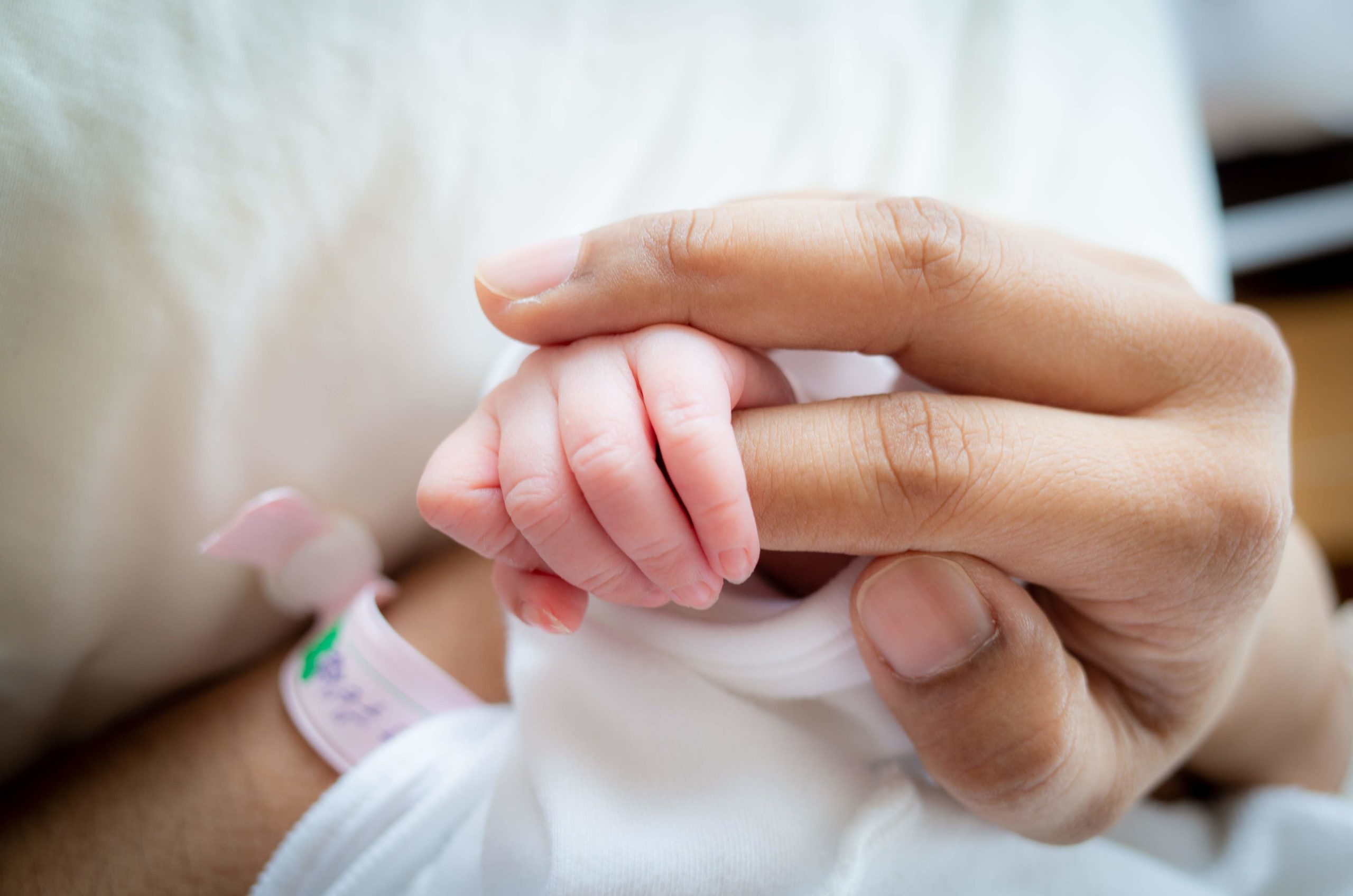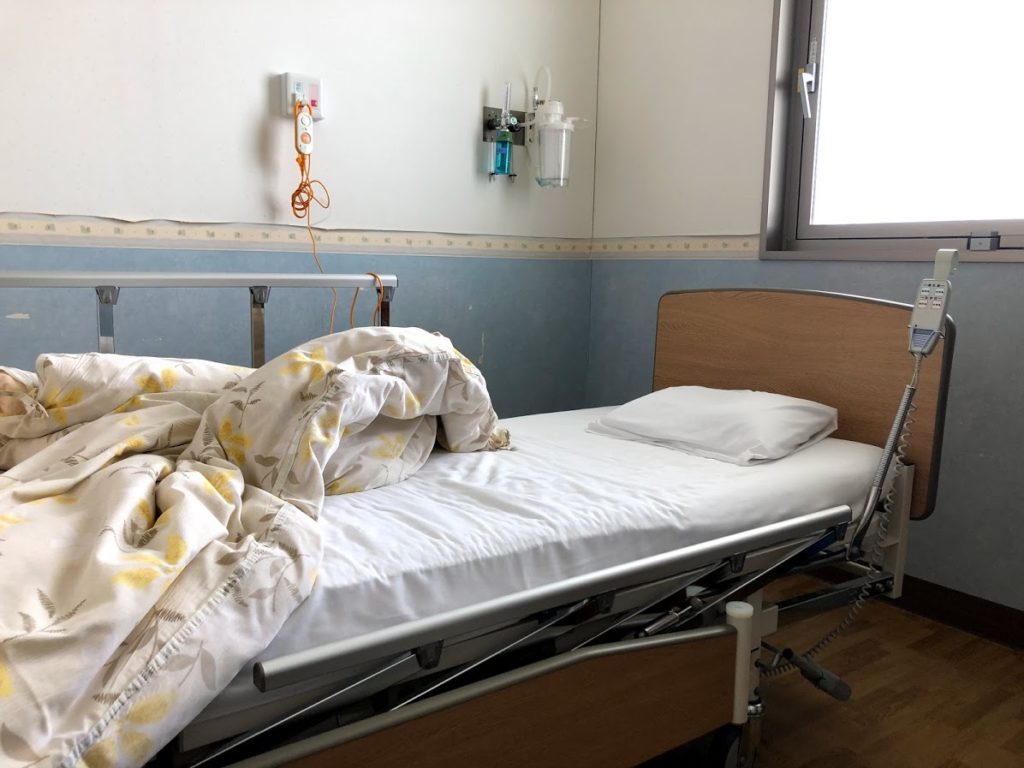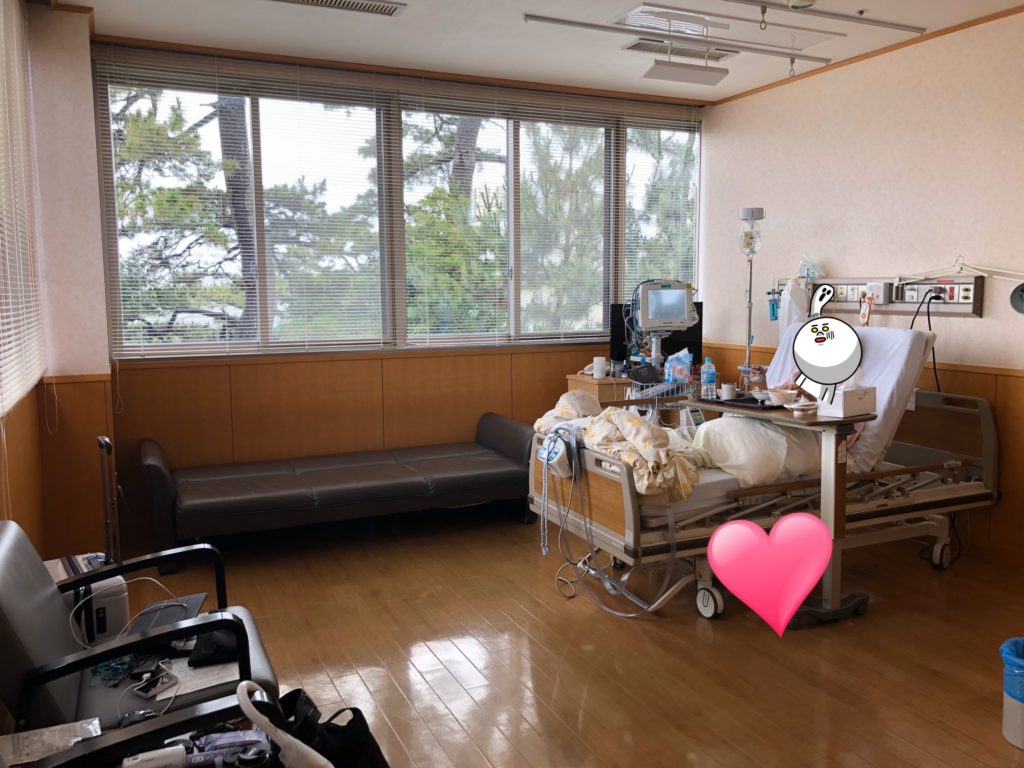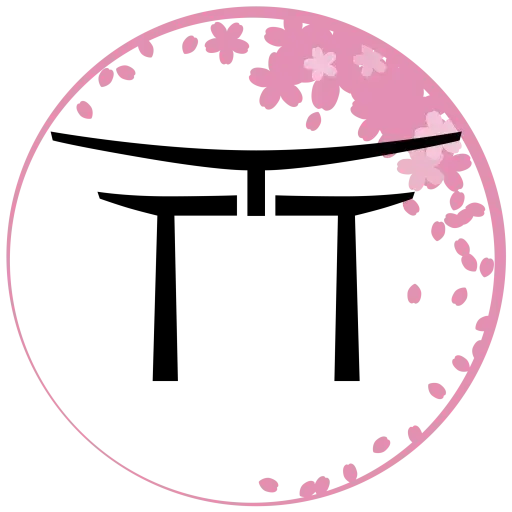My Japan Birth Story (Induction and C-Section)

Last Updated on September 18, 2025 by Kay
This post may contain affiliate links, meaning I may earn a small commission on any purchases through those links at zero additional cost to you. Whatever I make goes to keeping this website running and I am forever grateful for the support. See my Privacy Policy for more information.
Wondering what it’s like to give birth in Japan?
I gave birth to a healthy baby girl on a warm summer afternoon in Japan. I had done lots of research and taken a class beforehand, so I had thought I would be prepared.
However, the birth was not what I had expected at all.
I had planned to give birth at a particular clinic in Tokyo because the doctors there are primarily female, speak English, and were incredibly supportive after my miscarriage. My husband and I spent a lot of time writing up my birth plan, which in short involved an unmedicated birth with soothing music and essential oils, and the clinic had given the OK. Now we just had to wait for the baby to be born.
However, about two weeks before my due date, one of the doctors found a problem with my platelets. The count had substantially decreased, and if it fell below a certain amount, the clinic would have to refer me to a large hospital because it didn’t have the medical resources to handle my case. (I would need a blood transfusion as there was a high chance my blood wouldn’t clot after birth and I could lose a significant amount of blood and possibly die.)
I was devastated because the last thing I wanted was to end up at a hospital I’d never been to before with nurses and doctors I had never met and who didn’t speak English. However, there was nothing I could do but hope the baby would come on time.
When I was a day overdue (40 weeks + 1 day of pregnancy!), we went to the clinic again. After the doctors had a brief meeting, they decided that I was too high risk and needed to be admitted to a hospital close to our house first thing in the morning the next day. This hospital only accepts high-risk patients on a referral basis and I had gotten in on such short notice because the anesthesiologist who works there also works at my clinic once a week.
My husband and I went home, double-checked my hospital bag, and tried to make sense of what would be our last night together, just the two of us. It was all surreal and neither of us could really sleep.
Table of Contents
Admitted to the ICU in Japan
We arrived at the hospital at 9 AM and as I had anticipated, almost no one spoke English. Thankfully, I was able to generally understand what was going on and I had my husband with me, so there was no issue.
(After I gave birth, I spoke with a young nurse who did know English and she said that although they do get foreign patients, almost everyone can speak Japanese so there’s never been an issue. They also have translation devices on hand.)
Before being admitted to the ICU, I had to do an X-ray, a urine test, and then a whole bunch of bloodwork. Then I was taken to the maternity ward. I had wanted a private room but at this hospital, private rooms (if available) were only used after a patient gave birth, which meant that until then, I had to share a room with three other patients. It was far from ideal. Thankfully, I was in the corner and I could barely hear my neighbor.

My cozy hospital bed in the corner of the ICU room
I was asked to change into my pajamas, ate lunch that was brought to me, and then taken to see one of the doctors (who was a woman — thank goodness!). After she checked my cervix and how dilated I was (surprise – only 0.5 cm despite being two days overdue!), she decided to induce me, and if that didn’t work, I would get a C-section.
The nurse inserted a Foley bulb into me to ripen my cervix, which was horrifyingly painful. People have different experiences with this and some lucky women don’t feel a thing but I definitely felt it. It was awful.
The next six hours were also awful as I lay in bed and experienced what I could only describe as menstrual cramps on steroids. I thought I would throw up from the pain, and if that was bad, I couldn’t imagine what it would feel like after I would be given Pitocin the next day (if my cervix had softened enough), especially as I couldn’t have any pain-relieving medication due to my low platelet count.
When it came time to remove the bulb, I was so weak that they had to take me to the doctor in a wheelchair. The removal was not that bad but unfortunately, it seemed that my cervix was not budging, and I would have to go through it all over again the next day.
I was mentally and physically exhausted and upset that my husband was not allowed to stay with me overnight. Somehow I managed to go to sleep after watching some shows on my iPad, and it wasn’t long but it was the longest uninterrupted stretch I would get in a long time.
Although spouses can only come during visiting hours (noon to 8 PM), my husband was asked to come first thing in the morning, as we would be meeting with a more senior doctor.
After he examined me, he said that we could try the Foley bulb again in order to avoid a C-section but he didn’t think it would work. If we waited to do a C-section, the hospital would also need to order more blood as they didn’t have enough on hand.
We decided that it would be best to simply go with a C-section that day.
The C-Section and Birth
I was not allowed to eat beforehand, which was unfortunate because my husband bought me a lot of yummy food from Origin Bento. Nurses were in and out of my little space as I got several blood tests and had an IV.
Before the IV, I was asked to take a shower and at this point, the nurses realized they had forgotten to give me a huge bag that contained:
- towels
- postpartum nightgowns (one of which I had to wear to the surgery)
- two packages of postpartum pads
- two packages of nursing pads
- postpartum underwear
- shampoo, conditioner, body soap, and a loofah
- two huge packs of newborn diapers (Pampers and Goon – I didn’t even use Goon at the hospital and brought it home to use)
- baby wipes
- a book that contained a footprint/handprint kit as well as a recorder to capture the baby’s first cry (I wasn’t able to use it, unfortunately)
At 3 PM, it was go-time. My husband was unfortunately not allowed into the operating room so he went to the waiting room while the nurses accompanied me. One of the nurses offered to take photos of the baby after she was born so my husband gave her our camera (she did a fantastic job).
Initially, I didn’t feel scared as I wanted everything to be over with and to finally meet my baby. However, when I lay down on the operating table, I couldn’t help but start crying.
Thankfully, the anesthesiologist was the same doctor who would have done my epidural at the previous clinic and he was very kind and reassuring. He had actually checked up on me the previous night and that morning before the surgery while no other doctor had, and having that rapport was so essential as it made me feel safe.
I didn’t feel anything when I got the spinal, apart from a brief rush of cold liquid going through me. Quickly, the lower half of my body became numb, although it happened so fast that I was worried it didn’t actually work and I would end up feeling the incision.
The anesthesiologist put something cold on my arm and asked if I could feel that it was cold, which I could. He then put it on my abdomen and I knew it was there but I couldn’t feel how cold it was.
The nurses asked me to look to the side at the little plastic bassinet where they would place the baby. Then I felt some tugging. I wasn’t sure exactly what was being pulled or moved (later on, I would learn that in a C-section, a small incision is made, and then the doctor tugs it open to get to the baby).
And then I heard it: my baby girl’s first cry.
In an instant, I felt so many emotions, but most of all, I felt relief. The one thing I had wanted was for her to be born safely and healthily, and her gurgled cry was her way of telling me that she was okay.
The nurses put her in the bassinet and quickly cleaned her off. She cried when they cleared her mouth and nose, but in between, she was quiet.
After wrapping her in a towel, the nurses brought her to me and put her next to my face. At this point, I began feeling very sleepy from the anesthetic, and when they told me to kiss her, I had a lot of difficulty. Looking back, I wish I were less loopy to enjoy the moment.
The baby was then taken to get checked, while I was taken back to the room. My husband was waiting there and immediately burst into tears when he saw me, telling me that he was so worried and that I had done a good job.
I slept for a bit and then one of the nurses brought in the baby. The baby was more beautiful than we could have ever imagined (even now we keep asking one another how we made such a gorgeous baby, but of course all parents think that about their child). My husband was over the moon and the nurse kindly offered to take pictures of us.
After my husband left in the evening, I tried to sleep but the machine I was hooked up to (I believe it was an electrocardiogram) kept beeping loudly any time I fell asleep. A nurse also checked up on me every hour or so to press down on my uterus to help it contract and shrink back to its original size (it was very painful), change my massive postpartum pad, and check my catheter.
Normally, I would feel embarrassed but I was so exhausted and in pain that I didn’t care. It also helped that the nurse (I’ll call her Nurse M from now on) was one of the nicest people I have ever met and she continued to go above and beyond throughout my stay.
Recovery
I needed to stay at the hospital for one week in order to fully recover, which was far from ideal. Thankfully, the day after the baby was born, I didn’t have any complications so I was able to move to a private room the day after the surgery, one where my husband was able to stay overnight (this was the most expensive room).
One thing I found interesting was that I was given a tiny wooden box with a tiny piece of Baby A’s umbilical cord in it. The box was left open on a television stand so that it could dry before I took it home. This is common in Japanese culture and I think it’s a wonderful memento of the bond between mother and child.

Having lunch in the private room the day after the surgery.
Although less than 24 hours had passed since the C-section, I was able to walk to the bathroom, as painful as it was, so the catheter was removed. The IV was removed as well.
My room had a bathtub for some reason, although women are not allowed to take baths after giving birth, and the shower was in the bathtub, similar to Western baths, which meant showering involved lifting my legs and getting into the tub. This was incredibly painful, and although I managed to do it, I asked to use the shared Japanese-style shower in the ICU. I really don’t know how women shower in North America after a C-section!
I also asked for stronger oral painkillers and I’m glad I did because I was able to move around more, which I believe helped with my recovery. I took only half the prescribed amount and two weeks after I was discharged, I stopped taking the painkillers completely.
One thing I didn’t know was how much discharge I would have despite undergoing a C-section. I went through all of the postpartum pads I brought as well as the ones that were given by the hospital, so if you’re having a C-section, make sure you bring at least two packs of postpartum pads!
The hospital also wrapped a white belt around my belly and waist after the procedure to help keep everything in place and ease the pain. I was only given one, and it got gross pretty fast because I was always wearing it, so I recommend bringing your own as well if you are having a scheduled C-section. These can be bought on Amazon, although it’s considerably cheaper if you buy it at a baby store like Akachan Honpo, Nishimatsuya, and Babies R Us.
In terms of the baby, she was initially brought to my room every three hours for feeding but by the third night, I was asked to go get her from the nursery and feed her in the nursing room or keep her in my room overnight. I did this when my husband stayed the night as I couldn’t leave the baby alone and had to call a nurse to watch her if I wanted to go to the washroom and I found that annoying. (It was also quite painful to push the bassinet to my room and back to the nursery as it was quite heavy. I found myself holding my incision with one hand and pushing with the other.)
The baby had been bottle-fed since she was born and had trouble latching on when I tried to breastfeed her. Throughout the seven days at the hospital, the nurses tried several times and positions to get the baby to latch but she simply wouldn’t. However, the day before the last day, Nurse M suggested that I feed the baby while sitting her on my thigh and it worked! I continued to feed the baby in that position, although because of my low supply, I primarily bottle-feed.
Overall, staying in the hospital for a week to recover was annoying at times as all I wanted to do was be at home and enjoy spending time with my newborn on my terms. Speaking Japanese when I was so tired was also not ideal.
However, I do feel that my week-long stay helped a lot with my recovery. When I was discharged, I was able to move around quite easily and had no complications from the surgery. My husband said he couldn’t believe that I was the same person considering how much pain I was in right after the surgery.
Other than the surgical glue, nothing was placed over my incision, which was very small and clean. It worried me a bit, but I wore high-waisted undies that I bought from Nishimatsuya or ones with absolutely nothing at the waist (like the seamless ones from Uniqlo) and there were no problems. My skin at the incision flaked off but it wasn’t painful. I made sure to take care when I took a shower and did not touch the incision at all.
After four weeks, I was completely back to normal but until my six-week postpartum checkup, I made sure to take it easy. My husband took paternity leave, so that helped a lot. I was able to hold the baby with no problems but that first week out of the hospital my husband did his best to tend to the baby at night so I could rest.
One thing I was especially worried about was losing weight around my belly due to the C-section incision but although I am not entirely toned yet (at the time of this update, which is 10 months postpartum), I lost all of my pregnancy weight by 4 months postpartum. I did some easy C-section weight loss exercises on YouTube once in a while but other than that, taking care of a newborn was enough to make me lose weight!
Another thing I want to mention is that if I have another child, I will have to have a C-section again. I was also warned against becoming pregnant again for another year. Interestingly, a nurse told me that I couldn’t have sex for a year (which was also written in the hospital’s postpartum care guide that we were given), but the doctor told me that wasn’t true at my 6-week checkup and that I was good to go if my husband and I wanted to be intimate. (It took a while longer for me to get in the mood but the good news is that I felt zero pain whatsoever when we did the deed).
Giving birth in Japan, especially a sudden C-section, was an overwhelming experience but more positive than I had expected. I am still a bit sad that I couldn’t do kangaroo care right after my baby was born or breastfeed her and have that bonding time after she had just entered the outside world.
However, I have nothing but gratitude for the hospital staff that brought my baby girl safely into the world and helped me recover to the point that sometimes I forget I had a C-section.

